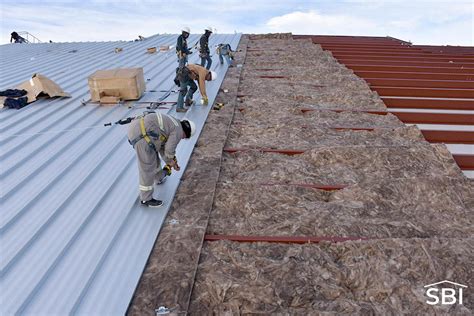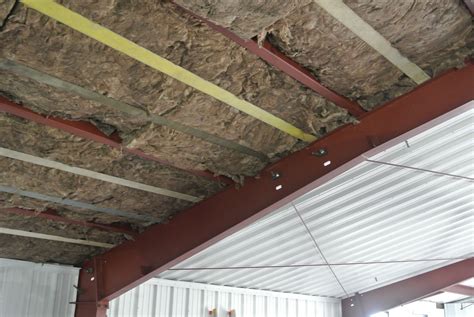are houses made of metal better than insulators Types of Insulation: There are several types of insulation that work well for metal buildings, including spray foam, fiberglass batt, and reflective barriers. Each type has its pros and cons, but all offer a significant boost to energy efficiency. Enduring the Price of Metal Building . Septic system D box installation, specifications, inspection, diagnosis, and repair: in this article series about septic system drop boxes we describe the best procedures for locating and inspecting, repairing or replacing the septic drainfield distribution box, or .
0 · roof insulation for metal building
1 · metal building insulation reviews
2 · insulation for metal buildings
3 · best metal insulation for buildings
4 · are metal homes good for you
5 · are metal homes durable
6 · are metal building houses good
7 · are metal building homes worth it
What is a Septic Distribution Box and How Does it Work? A septic tank distribution box, or D-box, is a junction box that connects the outlet pipe from the septic tank to the multiple distribution pipes heading to different sections of the drain field.
Types of Insulation: There are several types of insulation that work well for metal buildings, including spray foam, fiberglass batt, and reflective barriers. Each type has its pros and cons, but all offer a significant boost to energy efficiency. Enduring the Price of Metal Building .Metal homes can be designed with energy efficiency in mind. Proper insulation, reflective metal roofing, and wall systems can help minimize heat transfer and reduce energy consumption for . Compared to other structures, metal houses can be made with better heating and insulating systems. It means that they can be much more energy-efficient than homes built with wood and most other materials. Compared to other structures, metal houses can be made with better heating and insulating systems. It means that they can be much more energy-efficient than homes built .
Durable, weather-resistant and easy to maintain, metal siding gives your home a fresh, modern feel that lasts. But it’s important to weigh the pros and cons of metal siding, which is often aluminum nowadays, before jumping in. There are many reasons to consider a steel frame home. Benefits include strength and weatherproof qualities, as well as its ease of use and environmentally friendly properties. Drawbacks can include logistical .
However, most people are usually more skilled at insulating traditional homes which have different requirements from a metal home. The right insulation will help you reduce energy consumption significantly. In fact, you . The best insulation for metal buildings is typically a material with a high R-value, such as spray foam or fiberglass blanket. Spray foam insulation is particularly effective for metal buildings because it forms a seamless barrier .
roof insulation for metal building

In this post, we’ll explore three common types of insulation for metal buildings: fiberglass insulation, spray foam insulation, and reflective insulation. We’ll discuss the pros and cons of each type to help you make an . Types of Insulation: There are several types of insulation that work well for metal buildings, including spray foam, fiberglass batt, and reflective barriers. Each type has its pros and cons, but all offer a significant boost to energy efficiency. Enduring the . Rigid board, made from fiberglass, would be the best option for roofs and basements as the high insulation rating allows it to insulate the home better than, say, loose-fill or batt and blanket. Fiberglass is also one of the preferred materials for .
Metal homes can be designed with energy efficiency in mind. Proper insulation, reflective metal roofing, and wall systems can help minimize heat transfer and reduce energy consumption for heating and cooling.
Compared to other structures, metal houses can be made with better heating and insulating systems. It means that they can be much more energy-efficient than homes built with wood and most other materials. Compared to other structures, metal houses can be made with better heating and insulating systems. It means that they can be much more energy-efficient than homes built with wood and most other materials. Durable, weather-resistant and easy to maintain, metal siding gives your home a fresh, modern feel that lasts. But it’s important to weigh the pros and cons of metal siding, which is often aluminum nowadays, before jumping in. There are many reasons to consider a steel frame home. Benefits include strength and weatherproof qualities, as well as its ease of use and environmentally friendly properties. Drawbacks can include logistical challenges during the initial building process and concerns over insulation and R-value.
However, most people are usually more skilled at insulating traditional homes which have different requirements from a metal home. The right insulation will help you reduce energy consumption significantly. In fact, you may even enjoy some tax breaks or incentives if your metal home meets certain energy rating requirements. The best insulation for metal buildings is typically a material with a high R-value, such as spray foam or fiberglass blanket. Spray foam insulation is particularly effective for metal buildings because it forms a seamless barrier that prevents air . In this post, we’ll explore three common types of insulation for metal buildings: fiberglass insulation, spray foam insulation, and reflective insulation. We’ll discuss the pros and cons of each type to help you make an informed decision.
Types of Insulation: There are several types of insulation that work well for metal buildings, including spray foam, fiberglass batt, and reflective barriers. Each type has its pros and cons, but all offer a significant boost to energy efficiency. Enduring the . Rigid board, made from fiberglass, would be the best option for roofs and basements as the high insulation rating allows it to insulate the home better than, say, loose-fill or batt and blanket. Fiberglass is also one of the preferred materials for .Metal homes can be designed with energy efficiency in mind. Proper insulation, reflective metal roofing, and wall systems can help minimize heat transfer and reduce energy consumption for heating and cooling.
Compared to other structures, metal houses can be made with better heating and insulating systems. It means that they can be much more energy-efficient than homes built with wood and most other materials.
Compared to other structures, metal houses can be made with better heating and insulating systems. It means that they can be much more energy-efficient than homes built with wood and most other materials.
Durable, weather-resistant and easy to maintain, metal siding gives your home a fresh, modern feel that lasts. But it’s important to weigh the pros and cons of metal siding, which is often aluminum nowadays, before jumping in. There are many reasons to consider a steel frame home. Benefits include strength and weatherproof qualities, as well as its ease of use and environmentally friendly properties. Drawbacks can include logistical challenges during the initial building process and concerns over insulation and R-value. However, most people are usually more skilled at insulating traditional homes which have different requirements from a metal home. The right insulation will help you reduce energy consumption significantly. In fact, you may even enjoy some tax breaks or incentives if your metal home meets certain energy rating requirements.
The best insulation for metal buildings is typically a material with a high R-value, such as spray foam or fiberglass blanket. Spray foam insulation is particularly effective for metal buildings because it forms a seamless barrier that prevents air .
metal building insulation reviews

sheet metal fabrication leeds
insulation for metal buildings
Minimum Sheet Metal Flange Bend Length = 3 x Sheet Thickness + Bend Radius. Small-sized punches are more prone to failure during sheetmetal punching operation. Therefore for softer materials, the recommended minimum hole diameter is equal to sheet thickness.
are houses made of metal better than insulators|metal building insulation reviews